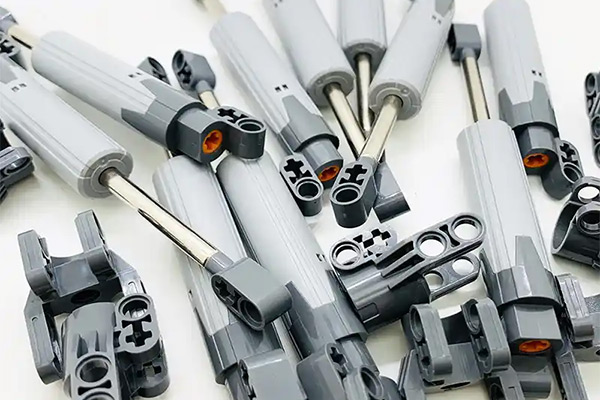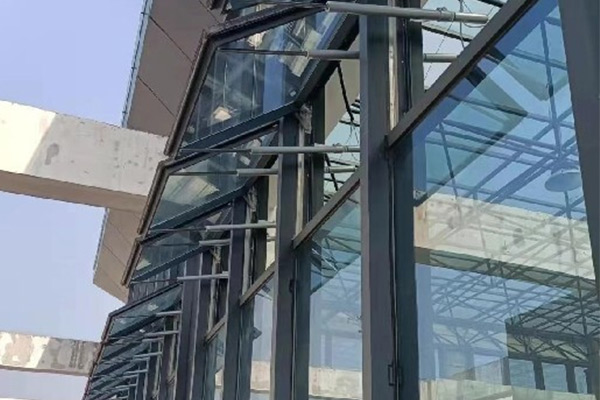How Electric Mini Linear Actuators Drive Micro-Robots and Smart Production
In today's highly integrated and intelligent world, the demand for miniaturization, high precision, and efficient automation is growing exponentially. While automation once seemed confined to large, cumbersome machinery, it has now, thanks to the booming development of mini electric linear actuators, truly become within reach, even driving the smallest robots and most intricate production processes.
Mini electric linear actuators: Small Form, Big Power
mini electric linear actuators, as their name suggests, are compact devices that convert electrical energy into precise linear motion. They're typically powered by miniature motors (like stepper motors, DC motors, or brushless DC motors) and use precisely engineered lead screws (ball screws or lead screws) or other mechanical transmission mechanisms to achieve accurate pushing, pulling, lifting, or positioning over ranges of centimeters or even millimeters.
Compared to traditional, larger actuators, mini actuators boast unparalleled size advantages, high-precision positioning, low power consumption, and ease of integration. These characteristics make them ideal for implementing automated functions in confined spaces.
Driving Micro-Robots: Making Dexterity Possible
Micro-robots represent a significant direction for the future of automation. They're designed to perform tasks in tight spaces that are difficult or impossible for humans to access. mini electric linear actuators are the core driving force behind these miniature marvels.
● Precision Gripping and Manipulation: In micro-surgical robots, lab automation equipment, or electronics assembly lines, mini actuators can drive tiny grippers to precisely pick, place, or even solder minuscule components. For instance, a pen-tip sized actuator can control the micro-pliers on a robotic arm to pick up a chip with sub-millimeter accuracy.
● Flexible Joint Movement: For pipe inspection robots, bio-inspired insect robots, or exploration robots, mini electric linear actuators can serve as joint drivers, enabling flexible bending, extension, and turning movements, allowing them to navigate complex environments.
● High-Precision Positioning: In miniature reconnaissance or measurement robots, mini actuators are used to precisely adjust the angle and position of sensors or cameras to acquire clear and accurate data.
All these applications demand actuators that are not only tiny but also offer high precision, low noise, and excellent reliability, all of which mini electric linear actuators excel at providing.
Empowering Smart Production: Ushering in an Era of Efficient, Precision Manufacturing
Within the context of smart production and Industry 4.0, mini electric linear actuators are transforming traditional manufacturing models, pushing them towards greater refinement, automation, and flexibility.
● Micro-Assembly and Testing: Assembly lines for products like mobile phones, smart wearables, and medical devices demand extremely high precision. Mini actuators drive automated assembly tools for micron-level component alignment, pressing, dispensing, or welding, significantly boosting production efficiency and product quality.
● Quality Control and Inspection: In automated quality inspection systems, mini actuators can precisely move sensors, cameras, or probes to perform high-speed, high-resolution scanning and inspection of products, identifying tiny defects and ensuring products meet standards.
● Mold and Fixture Adjustment: In processes like injection molding and stamping, micro-adjustments to molds and fixtures are crucial for product accuracy. mini electric linear actuators can enable automated, remote, and fine-tuned adjustments of mold gaps, clamping forces, or positioning points, reducing manual intervention and improving production consistency.
● Smart Warehousing and Logistics: In small automated warehouses or sorting systems, mini actuators can be used to drive the lifting mechanisms of miniature AGVs (Automated Guided Vehicles) or for precise pushing and positioning on shelves, enabling efficient goods retrieval.
Looking Ahead: Infinite Possibilities
With continuous advancements in material science, microelectronics, and artificial intelligence, mini electric linear actuators will continue to evolve towards being smaller, faster, stronger, and smarter. Actuators with integrated, higher-level sensors, built-in control algorithms, and wireless communication capabilities will further simplify system design, reduce costs, and unlock even more unprecedented application areas.





